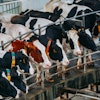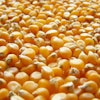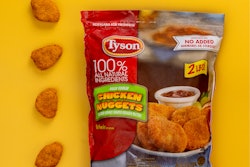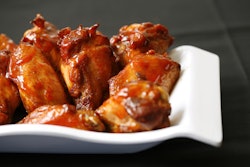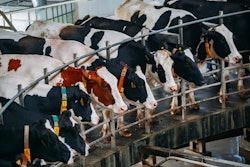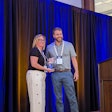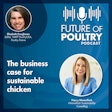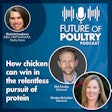
Diestel Family Ranch, the first U.S. turkey producer to receive the Regenified certification, continues to learn of the benefits of regenerative turkey production.
And while this certification gives them a competitive edge for such a niche market, fourth generation turkey farmer Heidi Diestel hopes other turkey producers will embrace the benefits of regenerative production for both the bird and the health-conscious consumer.
Results of Utah State University study
The California-based turkey producer worked with the Center for Human Nutrition Studies at Utah State University, which did a study that examined the nutritional benefits of turkeys raised using regenerative practices versus the nutritional benefits of traditional commodity turkeys. The study, led by the center’s director, Dr. Stephan van Vliet, did comparisons across three major product categories: breast meat, ground turkey and whole birds. Stephan van VlietUtah State University
Stephan van VlietUtah State University
The results of the study were first released in 2024, and as the study continues, Diestel Family Ranch recently learned of the results for the study in its second year.
“We’re kind of continuing season-to-season, year-to-year to really understand the metrics, like flock to flock, how much variation do we have,” Diestel said. “Are the test results consistent? Are they compounding?
The most recent data released showed that regenerative turkeys contained up to 2-3 times more antioxidants overall, with certain protective phenolics, flavonoids, and isoflavones measuring as much as 20-30 times higher than commodity turkeys. The study also showed regenerative turkeys consistently demonstrated up to 79% more omega-3 fatty acids in breast meat and 56% higher in whole bids and lower saturated fat levels in ground and whole turkey. Levels of vitamins A, B2, B7 and B12 were also elevated in regenerative turkey.
Interest in regenerative livestock and poultry production
A key component to regenerative turkey production is the feed that is used. Diestel Family Ranch sources its feed from a feed producer that has received certification from a third-party auditor. Its ingredients, such as corn and soybeans, were produced using regenerative practices. Processes such as heat-treating are not used, because Diestel said doing so makes it difficult to maintain the best nutrient density for the birds.
Diestel said the costs of production are higher for those who use regenerative practices, which has kept many from adopting that type of production.
Based on the inquiries he receives, van Vliet said interest in regenerative animal agriculture production is increasing, largely due to concerns about the health of the animals and the health of the people who consume the products.
“What I’m seeing is that consumers are more interested in how their foods are grown and what some of the health promoting properties in those foods are. Maybe this is not on the mind of everyone, but it’s definitely a growing number within the population,” he said, adding that regenerative meat and poultry may have a higher price point, but it can also help reduce other expenses, such as medical care.
According to van Vliet, major retailers are also seeking more regenerative animal protein products, and a number of major producers who raise a variety of species have also shown interest.
Making the leap
Diestel said the conversation around meats raised through regenerative practices started with ruminant animals, but there are still skeptics when it comes to regenerative poultry production. Heidi DiestelDiestel Family Ranch
Heidi DiestelDiestel Family Ranch
“There are a lot of folks who are critical of poultry in a regenerative program, but I think they’re only critical because they haven’t quite actualized the holistic and very large off-farm impact a poultry program can have,” she said.
Diestel said she does understand why other producers would be reluctant to move toward regenerative production.
“It’s so challenging to make that leap as a producer, and say, ‘yes, sign me up for four times the feed cost so that I can maybe have a market to sell this in. I totally understand where the poultry industry is coming from, from the perspective of costs and being able to sell this product into commerce and be paid for all the work that went into it,” she said.
But for Diestel Family Ranch, the choice was not difficult.
“What’s super humbling about all of this is when I think back to my grandfather and my great uncle who were farming, their philosophy on farming was do right by the land. Do right by the bird and that animal will do right be you,” she said. “That process has been followed and carried through the Diestel family for generations.”
“We hope for more growth, more education for the consumer, more awareness, and we hope for more people within our industry getting on board.”

